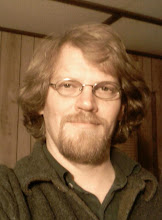Prophetic Consciousness
I am a spy in the house of the Lord.
According to the Kabbalah, the actions of ordinary men are in their own hands, but the works of kings are in the hands of God. Before wars are fought on earth, their outcome is determined in battle between angelic hosts. What does this mean? It means that zeitgeist and volksgeist are real concepts, represented in Jewish esoteric literature as the angelic princes of the seventy nations. It means that, while free will may affect something on the level of interpersonal relationships, it counts for nothing on the level of international relations.
I like to imagine some seraphic bureaucrat toiling away at the job of implementing heavenly policy – melting a glacier here, mutating a strain of N5H1 there, whispering sweet nothings in the President’s ear as he sleeps. I look at the situation of the world, and I imagine it as a purposeful result. This is hardly uncommon. It’s a practice shared by paranoiacs worldwide, from strict Calvinists to conspiracy theorists.
I suspect if most Liberals were of a similar theological bent, they would quickly become Gnostics. But I go in a slightly different direction. I’m not interested in figuring out who’s really part of the international banking conspiracy, or whether God is really a sadistic uberdaddy demiurge. I’m interested in reverse-engineering the process. I want to know the functional requirements of the system. What is all of this chaos and suffering for?
Angels are just an angle. Here’s another model, also from Kabbalah: God created the world in four stages, similar to the steps one might take to build a house. The first stage of creation is the primordial inspiration of the will. The second stage is the conception of that will in the mind: “I’ll build a house.” The third stage is the elaboration of the general concept of “a house” into the specific concept of “this house:” the number and type of rooms, their general layout, and what kind of materials (e.g. wood or brick). The fourth stage is the specification of the building plan: a blueprint. The fifth stage is the implementation of the plan, which involves workers and tools and results in a move-in date.
“As above, so below.” If you’ve ever wondered why Freemasons call God the Great Geometer and pattern their own spiritual development after training in the craft of building, wonder no more. This five-stage model of creation is a classic description of an engineering project. Cathedrals and roads and rockets to the moon are all built this way. The Mason’s self-development, the cultivation of virtue allegorized in the building of Solomon’s
Software project management also uses a modified version of this “waterfall model” of development. The difference between building static and well-understood structures like a bridge or a tower, and building novel and dynamic structures like a software application or a living organism, is that the later requires the ability to integrate feedback from implementation into the earlier planning stages. The current popular solution to this problem is called the “iterative and incremental” approach to project management. It first arose in AI development, where the goal is modeling learning and evolutionary development. So then the question becomes: “Is programming more like building a clock or making a baby?”
If Software Engineers had only received a little training in Kabbalah, they might have saved themselves the well-documented embarrassment of an average 80% failure-rate. These days, the principle of “iterative and incremental development” is part of methodologies like RUP and XP, but it took a lot of trial and error to realize the need for this approach. Also, it hasn’t helped much, because most people suck at using it.
The Kabbalah, however, articulates this concept as a primary factor in the nature of the universe. The five steps outlined above are a behavioral model of a system, to which the corresponding and much better-known structural model is the Tree of Life, made up of ten Sephirot (divine modes of behavior). The Central Dogma of Kabbalah is that, “Everything is made up of ten Sephirot, including each of the ten Sephirot.” In other words, cosmic creation has a fractal structure, reflecting an endlessly iterative and incremental process of development.
Having thus established a link between the Mysteries of Creation revealed in the mystical and arcane Kabbalah, on the one hand, and the occult sciences of Process Modeling and Software Development on the other, it immediately occurred to me to wonder, what would the problem domain look like if the world today approximates a programmed solution? At first glance, a productive insight: Natural Theology 2.0. Alas, my metaphoric angelic bureaucrat has written spaghetti code, with a stereotypical lack of documentation and inadequate quality control. God is a Cowboy Coder.
I have little else of certainty to report. Speculation to follow....


0 Comments:
Post a Comment
<< Home